Bradford: The unlikely 2025 UK City of Culture
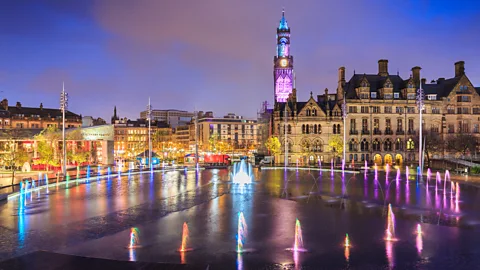 Getty Images
Getty ImagesLong brandished with a bleak reputation, this once-proud industrial town is showcasing its youth, diversity and inclusive arts scene to the nation.
For a long time, the northern English city of Bradford's best-known claim was being crowned the "Curry Capital of Britain", thanks to its large and vibrant South Asian community and reputation for outstanding restaurants. To many, Bradford epitomised the "grim up North" attitude, with Londoners and those from southern England looking down on the former industrial city and its dismal reputation. Even the weather was deemed gloomy, with forecasters recently citing Bradford as the least sunny place in the country.
But in 2025, Bradford is turning the page. Against lazy tropes and negative headlines, the city is proudly stepping into the spotlight as the 2025 UK City of Culture with an ambitious year-long programme of roughly 1,000 events showcasing its creative legacy and vibrant, multicultural present.
Bradford hasn't always had such a bleak reputation. During the Victorian era, it was one of the richest towns in Britain due to its manufacturing might. By the 1920s, locals claimed the city boasted more Rolls-Royces per head than anywhere else on Earth. Poet TS Eliot even referenced the city's elite in his poem The Waste Land, likening their confidence to "a silk hat on a Bradford millionaire".
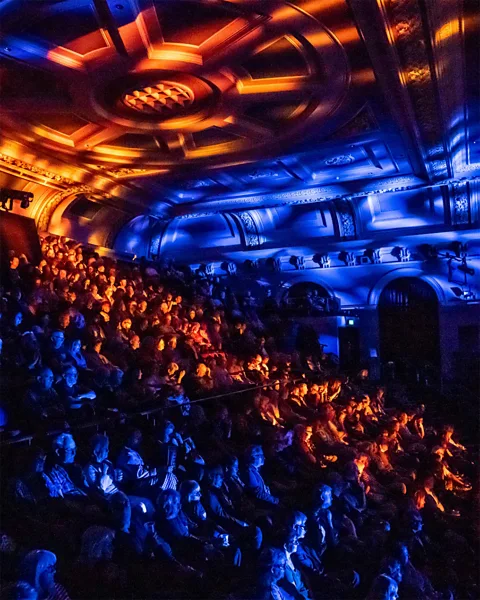 Bradford 2025
Bradford 2025Today, reminders of that grandeur remain. Sweeping Yorkshire moorlands surround the city, while its streets are lined with an array of superbly preserved Victorian and Gothic buildings from its days as the "wool capital of the world". But Bradford didn't land the City of Culture accolade on its looks alone – it was earned through its creative pedigree.
The best of 2025
Bradford was named one of BBC Travel's 25 best places to visit in 2025, a list highlighting destinations that are not only welcoming visitors, but using tourism as a force for good. See the full list here.
This is the birthplace of artist David Hockney, composer Frederick Delius (whose childhood piano can be seen at the city's medieval Bolling Hall manor), playwright JB Priestley (An Inspector Calls) and Oscar-winning screenwriter Simon Beaufoy (Slumdog Millionaire and The Full Monty). Thanks to its rich on-screen heritage, the city was even declared the world's first Unesco City of Film in 2009 – an accolade now shared with cities like Rome, Sydney and Busan.
Then there's the Brontë sisters (Charlotte, Emily and Anne), whose literary masterpieces include novels like Jane Eyre, Wuthering Heights and The Tenant of Wildfell Hall. Born in Bradford, their later home in the idyllic moorland village of Haworth just outside the city makes for a memorable literary pilgrimage.
On my recent visit to Bradford, it became clear that city officials are keen to use this year's spotlight to move beyond its boom-and-bust past. "We hope the City of Culture programme will change people's perceptions," said Visit Bradford tourism officer Lisa Brankin, as we chatted in what might just be Britain's most beautiful bookshop: a branch of Waterstones filling the city's soaring Victorian Gothic former Wool Exchange.
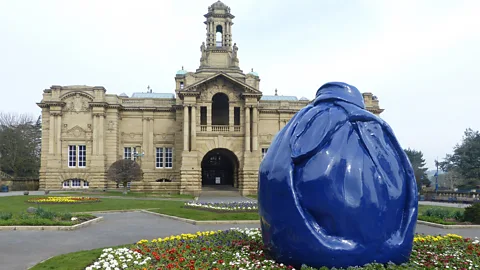 Norman Miller
Norman MillerThroughout 2025, the city's inclusive and diverse programme of events is celebrating Bradford's many communities and traditions, from its coal mine brass bands to modern South Asian bhangra concerts. "We wanted to ensure Bradford's communities have ownership of the programme and are represented within it," said Shanaz Gulzar, Bradford 2025's creative director.
In September, for example, a new show called RIDE! will highlight music from the city's Roma community; while an exhibit at the end of July titled Tu i Tam/Tyt i Tam documents the lives of the city's Polish and Ukrainian citizens. "We've also created a unique touring venue, The Beacon, which will pop up for month-long open-access stints in parks across Bradford, plus activities like BD on Foot, a series of walks encouraging people to explore the wider district and see the region in a different way."
Standing in the city's central Centenary Square, I took in a sweep of the cultural beacons around its fountain-filled expanse. On one side, the Alhambra Theatre is a historic Art Deco jewel located a stone's throw from the Impressions Gallery, a modern photography beacon where I enjoyed an introduction to the work of Ethiopian artist Aïda Muluneh. An ongoing renovation will see the nearby Kala Sangram South Asian arts and culture centre become the Bradford Arts Centre in a transformed historical building. Next to the Alhambra, the National Science and Media Museum showcases a broad range of visual cultural expressions, from the early days of photography in the 1800s to 21st-Century digital arts.
After visiting the 15th-Century Bradford Cathedral, I pottered among the grand buildings that fill the city's Little Germany quarter, where dozens of soaring ornate edifices provided the corporate headquarters of rich 19th-Century Teutonic wool merchants. Visitors may recognise the area as the atmospheric backdrop of BBC TV shows like Peaky Blinders and Gentleman Jack.
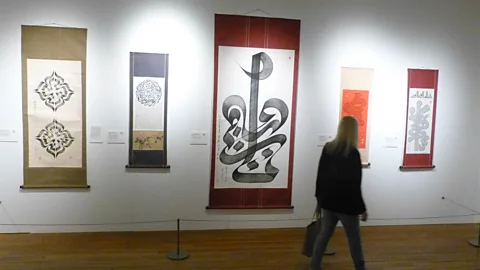 Norman Miller
Norman MillerBeyond Little Germany, Bradford has blossomed into one of the most diverse metropolises in the UK, with 32% of residents having Asian heritage and the city counting roughly as many Christians as Muslims. It's also the UK's youngest city, with a quarter of residents under the age of 20. An uplifting example of that youthful perspective greeted me on arrival at Forster Square train station, where old railway arches frame metal gates, each inscribed with lines of a poem written as part of the City of Culture programme by Bradford schoolgirl Iqra Khan. It ends with the words: "I come from hope/I come from Bradford."
Plan your trip:
Bradford's 2025 City of Culture programming runs through December, but the best time to visit is in the summer and autumn. The city is well connected by train from the rest of the UK, with frequent direct services running from London, Manchester and the nearby city of Leeds. The Great Victoria Hotel, which opened in 1867 and is located near Centenary Square, has had a recent renovation and makes for a great place to stay.
According to city officials, Bradford 2025 events have drawn 1.1 million people to date – and many have come away thoroughly impressed. "I'm blown away by the city," Alexandra Bowen recently told the BBC during a visit from her home in Kent. "People said to me 'why are you going to Bradford?', because unfortunately, it hasn't had a very good reputation. I love what's happened here in the city centre and I've been to a lot of the museums. I'm really impressed."
Bradford's 2025 City of Culture offerings extend outside the city too. A 10-minute train ride from Forster Square is Saltaire, a Unesco World Heritage "model village" created by Victorian textile magnate Sir Titus Salt. Here, amid the woody banks of the River Aire and Leeds and Liverpool Canal is one of Britain's most stunning arts venues: Salts Mill.
Inside, the mill's 19th-century interiors have been refashioned into a series of galleries, with a whole floor dedicated to one of the world's best permanent displays of works by Hockney, complemented by a modern photography gallery and a top floor exploring Saltaire's fascinating industrial history.
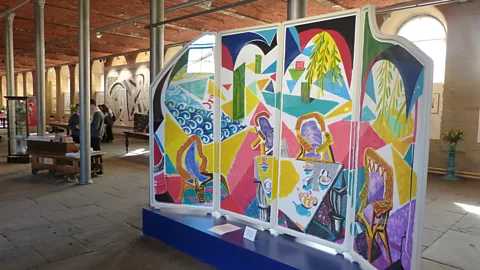 Norman Miller
Norman MillerHockney has long donated works to venues across Bradford, including a dedicated space at the Cartwright Hall Art Gallery. Built in 1904 in the leafy setting of Lister Park, this beguiling gallery-museum mixes historic paintings with contemporary work by artists including Turner Prize winners Anish Kapoor and Yinka Shonibare. For Bradford 2025, however, the gallery has bagged an art world coup and will host this year's Turner Prize exhibition beginning 27 September.
More like this:
• Why now is the time to explore outer East London
• The Peak District sights featured in Jane Austen's Pride and Prejudice
Elsewhere, visitors can head to Bradford's surrounding hills until 12 October to experience a groundbreaking open-air immersive sound walk combining a new moorland sculpture trail with contemporary music alongside performances of Delius's compositions by Opera North.
Another intriguing project is artist Deepa Mann-Kler's Meet Our Mothers – an interactive digital cookbook that will be published in autumn 2025 highlighting diverse food stories tied to local communities. "In this city, food is more than just nourishment, it is also a powerful unifying force," explained Mann-Kler.
Mann-Kler's words inspired me on my last night to visit one of Bradford's most venerable food spots: the 1960s restaurant TheSweet Centre, where I met the family's fourth-generation owner Waqar Mughal.
"This is going to be an important year for us in Bradford," he told me over subtly spiced fish and chana puri. "Different religions, cultures and communities [are] getting together to really lift Bradford and show how rich the heritage is. And [we're showing] people throughout the UK – and the world – that we can all work together in a positive way."
--
If you liked this story, sign up for The Essential List newsletter – a handpicked selection of features, videos and can't-miss news, delivered to your inbox twice a week.
